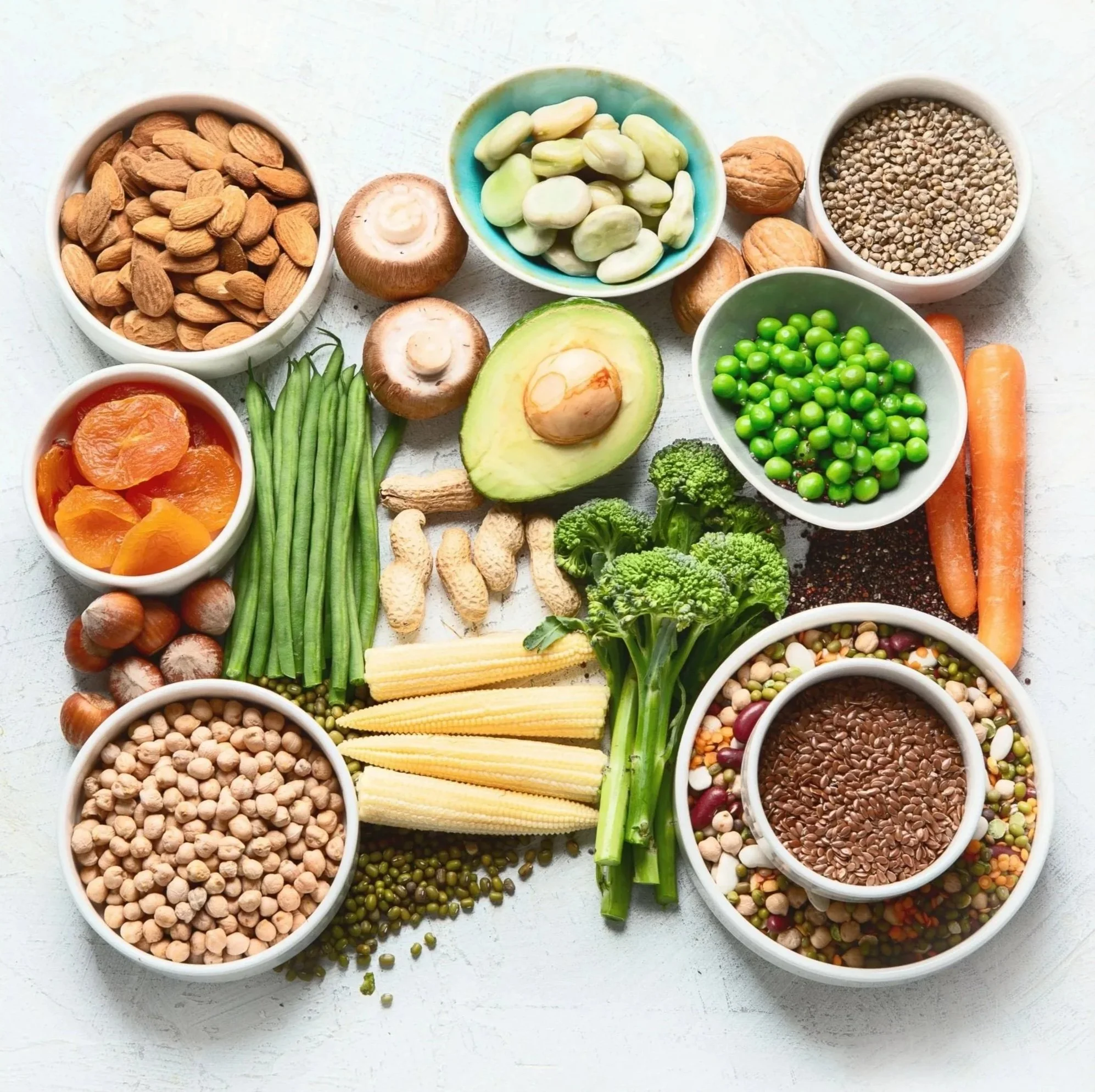Fiber Refresh: Better Digestion, Less Bloat
We all know fiber is important. It keeps digestion moving, helps you feel full, and supports overall health. But just like anything in nutrition, more isn’t always better, especially if we overload our system too quickly.
Take low-carb tortillas, for example. They get everyone at some point. 😅 Totally fine in moderation, but if they become your main source of fiber, or you eat a couple at once, it can lead to bloating and digestive discomfort. The key is whole food fiber sources spread throughout the day, paired with plenty of water. Fiber and water are BFFs. They work best together!
What Is Fiber?
Fiber is a type of carbohydrate that your body can’t fully digest. Unlike other carbs that break down into sugar for energy, fiber mostly passes through your digestive system intact. There are two main types:
Soluble fiber: Dissolves in water, forming a gel-like substance. It helps slow digestion, keeps you fuller longer, and supports healthy blood sugar and cholesterol levels. Foods high in soluble fiber include oats, beans, lentils, and fruits like berries and apples.
Insoluble fiber: Doesn’t dissolve in water. Adds bulk to your stool and helps food move efficiently through your digestive tract, supporting regular bowel movements. Foods high in insoluble fiber include vegetables, whole grains, nuts, and seeds.
Most whole foods contain a mix of both types, which is ideal for overall gut health.
Why We Need Fiber
Fiber is essential for:
Digestive health: Prevents constipation and supports a healthy gut microbiome.
Satiety and weight management: Helps you feel full, so you naturally eat less.
Blood sugar control: Soluble fiber slows the absorption of sugar into the bloodstream, helping prevent rapid spikes and crashes in blood sugar. This is especially important for anyone managing diabetes or insulin sensitivity, but it benefits everyone. Stable blood sugar can improve energy, mood, and cravings. High-fiber meals that also include protein and healthy fats help keep energy levels steady throughout the day.
Heart health: Soluble fiber can bind to cholesterol in the digestive tract and help remove it from the body, lowering LDL (“bad”) cholesterol. This can reduce your risk of heart disease over time. High-fiber diets have also been linked to improved heart health markers like lower blood pressure and reduced inflammation.
How Fiber Works in the Body
When fiber travels through your digestive system, it absorbs water and adds bulk to your stool. Soluble fiber forms a gel in your gut, slowing digestion and supporting steady blood sugar. Insoluble fiber acts like a broom, sweeping things along and keeping your digestive tract regular.
Fiber also feeds the good bacteria in your gut, which can improve digestion, immunity, and even mood. But here’s the catch: too much fiber too quickly, or fiber from not-so-great sources, can lead to bloating, gas, and discomfort. That’s why whole food sources and gradual increases are key.
Whole Food Fiber Sources
Here’s a list of fiber-rich foods (approximate fiber per 50g serving) to help you plan your meals:
Raspberries: 3.3g
Blackberries: 2.7g
Blueberries: 1.7g
Strawberries: 1.5g
Pear (with skin): 1.6g
Apple (with skin): 1.2g
Avocado: 3.4g
Broccoli (cooked): 2.5g
Brussels sprouts (cooked): 2.0g
Cauliflower (cooked): 1.5g
Carrots (raw): 1.4g
Green peas (cooked): 2.8g
Spinach (cooked): 1.2g
Sweet potato (cooked, with skin): 1.5g
Lentils (cooked): 4.0g
Chickpeas (cooked): 3.8g
Black beans (cooked): 4.4g
Kidney beans (cooked): 3.2g
Edamame (cooked): 4.5g
Oats (dry): 5.0g
Quinoa (cooked): 1.4g
Brown rice (cooked): 0.9g
Chia seeds: 17g (1 tbsp = ~2.5g)
Flax seeds: 13.5g (1 tbsp = ~1.5g)
Pumpkin seeds: 4.0g
Almonds: 6.3g
Walnuts: 3.4g
Popcorn (air-popped): 5g
Whole wheat bread: 3.2g
Easy Ways to Pair Your Fiber
Adding fiber to meals doesn’t have to be complicated. Here are some practical ideas that also support blood sugar control and heart health:
Berries + yogurt: A simple breakfast or snack combining fiber and protein to keep blood sugar steady.
Overnight oats with chia seeds and berries: Fiber, protein, and healthy fats all in one jar for sustained energy.
Veggies + hummus: Carrots, broccoli, or bell peppers with chickpea-based hummus for fiber, protein, and heart-healthy nutrients.
Lentil or bean salad: Mix black beans, kidney beans, or chickpeas with avocado, tomato, and spinach. (Note: Avocado and beans can add up in calories — portion size matters!)
Avocado toast: Whole wheat bread topped with avocado and a sprinkle of seeds. (Note: Avocado + seeds can be calorie-dense — balance with other meals.)
Edamame snack: Sprinkle with a little sea salt or chili powder for a high-fiber, protein-rich snack.
Sweet potato + protein: Roast or mash sweet potato with a protein like chicken, eggs, or beans for a fiber- and nutrient-packed meal.
Trail mix: Nuts + seeds + dried fruit (watch portion sizes for calories).
Pro Tips for a Happy Gut, Heart, and Blood Sugar
Aim for 25–35g of fiber per day: spread across meals.
Increase fiber gradually: sudden jumps can make your gut unhappy.
Drink plenty of water: it really helps fiber do its job.
Pair fiber with protein and healthy fats: helps to support steady blood sugar and satiety.
Focus on whole foods: We don’t want to rely solely on fiber bars, powders, or processed “high-fiber” products.
Fiber is powerful. It keeps digestion smooth, supports satiety, nourishes your gut bacteria, helps stabilize blood sugar, and even supports heart health by helping manage cholesterol. Like anything, balance and variety are key. Whole food sources, gradual increases, and hydration will keep your gut, heart, and energy levels thriving.
So yes, grab that tortilla if you love it! Just make sure the rest of your day is balanced with fruits, veggies, legumes, seeds, or whole grains. Your gut, your heart, and your energy will thank you. 😄
Want to learn more about The Habyt? We offer a FREE discovery call where we can answer all you questions!

